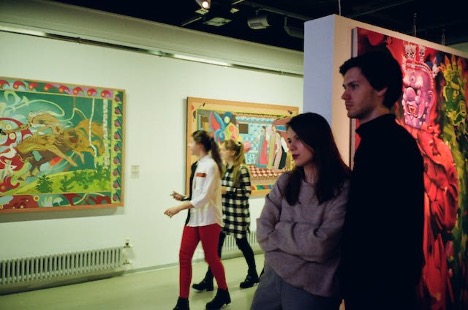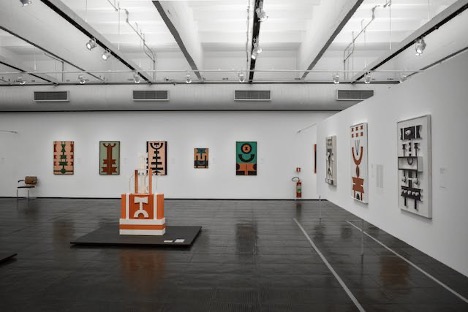Exhibition curation is organizing and managing collections of artwork or artifacts for public display. Historically, curators were the learned caretakers of cultural heritage, tasked with collecting and preserving precious items. Today, curation goes beyond mere preservation; it’s about creating a dialogue between the exhibit and its audience. The essence of compelling exhibition curation lies in the curator’s ability to translate a thematic vision into a physical experience that resonates with visitors. This transformative process is critical, for it defines the cultural and educational impact of the exhibit. Mastering this craft is pivotal in art and museum displays, making it imperative for curators to weave context, story, and engagement seamlessly into the fabric of an exhibition.
The Role of a Curator Is More Than Just Selection
The role of a curator extends far beyond selecting items for display. This pivotal position is multifaceted, encompassing the responsibilities of a historian, an educator, and a visionary. Curators are stewards of culture who preserve and interpret each piece’s significance within a collection. Essential skills for successful curation include a keen eye for detail, a deep understanding of art history, strong organizational abilities, and exceptional storytelling prowess. Furthermore, curators must possess the capacity for critical thinking and an understanding of audience engagement strategies. Through the careful arrangement of exhibits and insightful interpretation of themes, curators profoundly shape the viewer’s experience, transforming a simple visit to a gallery into an enlightening encounter with art, history, and heritage.

Crafting a Narrative of a Compelling Exhibition Curation
Storytelling in curation is not just an added benefit. It’s the backbone of a memorable exhibition. The narrative crafted by the curator guides visitors, giving context and meaning to the displayed works. To create this cohesive narrative, curators begin with a central theme, a thread that connects disparate pieces. They then carefully select and sequence exhibits to build upon this theme, much like chapters in a book. Each item is placed to contribute to the unfolding story, providing depth and building on the visitors’ understanding. Also, curators often utilize descriptive labels, audio guides, or digital media to further enrich the storyline. This ensures that as visitors move through the space, they are engaged in a continuous, unfolding dialogue that educates and inspires.
The Importance of Understanding Your Audience
Understanding your audience is fundamental to compelling exhibition curation. A curator must know who the exhibition will speak to. Be it art lovers, history buffs, school children, or the general public. This knowledge shapes the way information is presented, and the stories told. Strategies for audience research include analyzing visitor data, conducting surveys, and engaging with communities through social media or public programs. Curators can discern preferences, knowledge levels, and cultural interests from this data. Subsequently, curation styles can be tailored: interactive displays may engage younger audiences, while scholarly panels might be reserved for academic circles. By aligning the exhibition’s narrative with audience expectations and interests, curators foster a more resonant and enriching experience for each visitor.

Balancing Cohesion and Contrast Selecting Artworks
Choosing pieces that align with the exhibition theme is a thoughtful process. It involves an intricate balance between maintaining thematic cohesion and injecting enough contrast to captivate visitors. Curators must first immerse themselves in the theme, selecting works that embody the concept and communicate with one another, creating a visual and conceptual dialogue. Then, they introduce contrast to keep the exhibition dynamic, perhaps through varying artistic styles, periods, or mediums. This breathes life and complexity into the theme. This balance is a delicate dance: too much uniformity, and the exhibit risks monotony. Too much disparity, and the theme loses clarity. The goal is to create a tapestry of artworks that, while diverse, speak to a harmonious narrative, offering visitors a compelling journey through the theme.
The Logistics of Exhibition Design: Space, Flow, and Display
The physical layout requires a strategic approach, where space allocation must serve both display aesthetics and movement’s practicality. Attention to traffic flow is essential to avoid congestion, guiding viewers naturally from one piece to the next. Engagement is enhanced by considering sight lines, ensuring each work can be appreciated individually and as part of the collective theme. Effective utilization of space calls for creative display methods—whether that’s varying the height at which you hang the artwork, employing multimedia platforms, or designing interactive installations. These considerations create a harmonious environment that encourages contemplation and interaction, allowing the narrative to unfold gracefully around the viewer.

Incorporating Technology and Interactive Elements
Incorporating technology and interactive elements into exhibitions has become a prominent trend, enriching the visitor experience through engagement and education. Interactive touchscreens, augmented reality (AR) overlays, and virtual reality (VR) stations are just a few of the elements that modern exhibitions might feature. These technologies offer multi-sensory involvement, enabling visitors to delve deeper into the context of the artworks. For instance, AR can bring historical artifacts to life, providing a 3D view and backstory with just a smartphone. VR can transport visitors to the artist’s studio, or the period being depicted. Interactive elements encourage participation, such as digital guestbooks or social media integrations, allowing visitors to become part of the exhibition’s story.
Attracting and Engaging Visitors
Marketing is vital for exhibitions to capture attention and draw visitors. Compelling marketing materials should resonate with the target audience and vividly preview the experience. High-quality images, engaging descriptions, and clear, attractive designs are fundamental in promotional flyers, posters, and catalogs. Today, social media and online marketing play a crucial role. Platforms like Instagram and Facebook serve to announce exhibitions. Also, to create buzz through shareable content, behind-the-scenes glimpses, and interactive posts. Utilizing online advertising tools, such as targeted ads and search engine optimization, can significantly boost visibility and attract a digitally savvy audience to the physical space of the gallery.
Conclusion
Compelling exhibition curation requires a blend of historical knowledge, audience insight, narrative skill, and logistical precision. Incorporating interactive technology and strategic marketing further enhances visitor engagement. As the field evolves, curators must remain committed to learning and adapting. This dedication to growth ensures that each exhibition displays artifacts. Also, to tell a story that resonates deeply with its audience, fulfilling the true calling of curation.
________________________
Author’s Bio:
Sasha Riffe, a former logistics specialist at helixmoveva.com, applies her expertise in movement and flow to the art of curation. With an eye for detail honed through managing intricate relocations, Sasha brings a unique perspective to exhibition design, skillfully orchestrating the dance of space and narrative that characterizes exhibition curation.



1 Comments
As a prospective curator, I very much appreciate your insight. Thanks for sharing this piece. If you’re considering, Afro-Asian collaborations, kindly reach out. I’d like you to visit my upcoming gallery. Cheers!